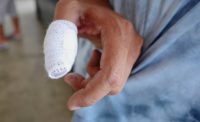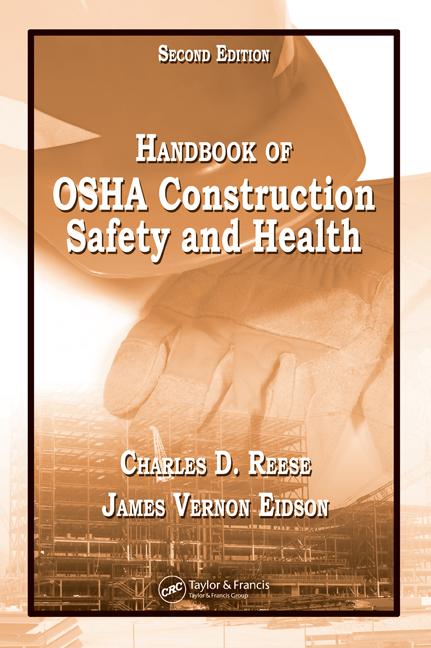Preventing punctures
Cut-resistance is not necessarily your answer

Puncture injuries caused by small penetrators that can introduce infectious material into the tissue are among the most prevalent and hazardous threats. While the safety glove industry has made significant advances in recent years, few providers have had much success resisting puncture threats and fine penetrators like hypodermic needles, splinters, glass shards and metal burrs. The challenge of the safety industry is twofold. It must continue to innovate and integrate new technologies and materials to curb hand injuries while educating the public about proper selection of available technologies.
The dexterity/protection paradox
Any hand protection product will require a compromise between comfort, protection and tactile sensitivity. An emergency medical technician, for example, cannot reasonably expect a glove to protect him from broken glass and debris at the scene of an accident while also enabling him to take a patient’s pulse. Hand protection by definition places a barrier between skin and the outside world, and considerations of dexterity and tactile sensitivity must be part of any solution.
DOL hand injury statistics include carpal tunnel syndrome and other repetitive strain injuries that might seem to be separate issues from the mechanical threats many protective gloves attempt to address. But because an improvement in protection has traditionally meant a reduction in dexterity and an increase in hand strain, many protective gloves have in fact contributed to the problem, essentially substituting one type of injury for another.
The problem is further compounded by widespread misunderstanding about the protective properties of any given glove. Workers who believe they are using “cut-resistant” gloves often handle materials that pose a more significant puncture threat, resulting in injuries that even gloves with the highest cut level ratings do not protect against.
Most gloves with any meaningful amount of puncture resistance are far too bulky to be practical in many applications. A glove on a human hand must have a minimum of 15 points of flexure, and the need for mobility in the joints means protective fabrics must be comfortable, flexible and relatively thin. Unfortunately, testing standards for dexterity and cut resistance are confusing, misunderstood, and may not provide information relevant to the threat in question. However, recently published testing standards are attempting to fill in some of the gaps.
A new standard
When considering any hand protection, it’s important to be sure the solution adequately addresses the threat. Among the most dangerous threats facing any worker’s hand is a hypodermic needle, which poses a prominent threat in law enforcement, medical and municipal maintenance applications.
Of course, these are not the only workplaces that face these sorts of threats. Fine penetrators can be found in a range of industrial workplaces, from wire and cable manufacturing to glass handling to general metalworking and construction. Perhaps most notably, hypodermic needles, glass shards and other puncture threats are also a significant threat in waste handling and sorting applications.
After recognizing the threat posed by hypodermic needles and other fine penetrators, the American Society for Testing and Materials (ASTM) published in November of 2010 a new testing standard for evaluating the resistance of fabrics and PPE to hypodermic needles. The standard, ASTM F2878-10, includes tests for 21, 25 and 28-gauge needles.
The new testing standard will serve to educate equipment buyers and inspire manufacturers to innovate. With a better understanding of the threats their workers face and more information about the properties of protective gloves, employers will be better equipped to find the right glove for the right job.
|
Classes of hand protection |
|
Given the importance of dexterity, the goal of protective glove manufacturers is to design a glove with maximum protection and minimum bulk. Employers must in turn select a glove designed to prevent penetrations by those threats the worker is most likely to encounter. If there are gaps or interstices between individual fibers of a protective glove, they must be small enough to arrest anticipated puncture threats. For protection from the flat edge of a blade, glass pane, or sheet of metal, a cut-resistant knit glove with relatively wide interstices might provide sufficient protection. However, knives also have points, glass has a tendency to shatter and sheet metal is often accompanied by very sharp, pointed burrs. A leather glove with no interstices provides a continuous barrier between the hand and threats like nails, splinters and burrs, but leather provides limited puncture protection. Protective materials based on hard guard plates offer effective abrasion and cut protection, and will resist puncture threats from large penetrators. However, by their very design, these fabrics will only stop small penetrators like hypodermic needles and glass shards if the threat hits a guard plate. Multiple layers of this material might improve the chances that a puncture threat hits a plate, but worker comfort and productivity will decrease dramatically as bulk increases. Densely-woven high-performance fibers offer the best puncture and hypodermic needle resistance, providing continuous protection throughout protective materials. They are also thin enough to preserve tactile sensitivity and flexible enough to limit hand fatigue. This technology changes the paradigm that more protection must equal more bulk. However, insulation value of thin materials is limited, making gloves based on this technology of limited value when handling high-temperature components. |
Looking for a reprint of this article?
From high-res PDFs to custom plaques, order your copy today!







